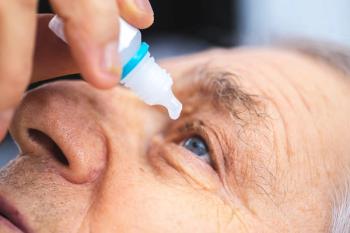
AAOpt 2024: Qlosi's effectiveness in treatment of presbyopia
Cecilia Koetting, OD, FAAO, DipABO, cited data from a recent study that found that presbyopia treatment with 0.4% pilocarpine led to up to 86% of patients achieving 20/40 or better.
Cecilia Koetting, OD, FAAO, DipABO, discussed her American Academy of Optometry poster presentation at the AAOpt meeting titled "Functional near vision improvement with CSF-1 (0.4% pilocarpine) stratified by baseline severity: Pooled results of the Phase 3 near clinical trials." Her presentation focused on the use of 0.4% pilocarpine for treating presbyopic patients.
Koetting explained that the study looked at outcomes for near vision in two groups - early presbyopes with 20/50 uncorrected near vision, and mild to moderate presbyopes with 20/60 to 20/80 uncorrected near vision. The goal was to evaluate how effectively 0.4% pilocarpine could improve functional near vision (20/40 or better) without impacting distance vision. The results showed that for the early presbyopes, 84.2% achieved 20/40 or better near vision on day 1 with up to twice daily dosing. This increased to 92.7% by day 8 and stabilized around 90% by day 15. For the mild to moderate presbyopes, 64% achieved 20/40 or better on day 1, increasing to 71% and 75% by days 7 and 15 respectively. Koetting explained that the improvement over time is likely due to brain adaptation, similar to when patients get new glasses. She emphasized that the 0.4% concentration used in the study was lower than the current 1.25% standard, yet still showed promising results. In terms of practical application, Koetting advised optometrists to start with early to mild presbyopes around 45-50 years old, as this group seemed to respond particularly well.
She also highlighted the importance of treating both eyes, even if only one received the drop, as this "summation of vision" led to up to 86% of patients achieving 20/40 or better. Overall, the discussion conveyed excitement about the potential of this lower concentration pilocarpine treatment for improving near vision in presbyopic patients without compromising distance vision. The summary of key findings and practical recommendations provides helpful guidance for optometrists considering this new option.
Newsletter
Want more insights like this? Subscribe to Optometry Times and get clinical pearls and practice tips delivered straight to your inbox.









































